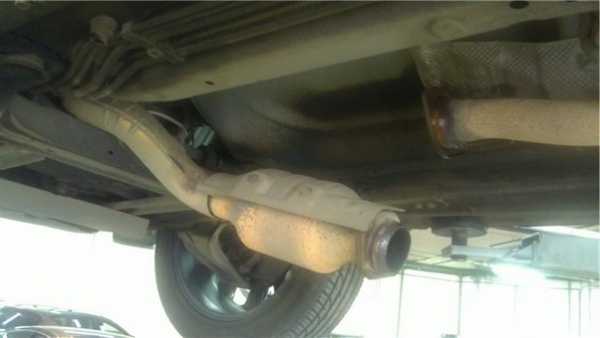
How to avoid muffler repair
Content
Silencers break when debris builds up in the undercarriage, the muffler rubs against the handlebar surface, or smoke comes out of the engine.
It hangs under your car at the back, exposed to the weather. No matter what you drive through or through, your muffler will usually take the brunt. In winter, salt, snow and sand corrode the exhaust gases, while the heat and hydrocarbons inside the exhaust system corrode the muffler from the inside.
Since so many factors come into play every day, it's no surprise that the muffler is one of the most frequently replaced car parts. Even though it is such a vulnerable component, you can avoid muffler repairs and replacements for a very long time with proper care. In some cases, it is possible to keep the original muffler in good condition throughout the life of the vehicle.
Part 1 of 3. Keeping the Undercarriage Clean
In many cases, your muffler needs to be replaced due to rust. The weather and environment cause muffler corrosion, which can go unnoticed until it's too late and a hole appears in the muffler. Cleaning prevents rotting from outside to inside.
Step 1 Park your car in a dry place.. If possible, park the vehicle in a dry place so that the chassis can dry out.
Vehicles parked outdoors, especially in humid or snowy climates, should expect wet weather to cause rust on their muffler much sooner than when parked away from the elements.
If snow and ice accumulates in the undercarriage, park in a warm underground parking lot every two to four weeks to melt the ice and snow.
Step 2: Wash the undercarriage. When you wash your car, use a pressure washer to wash the corrosive salt off the car floor and muffler.
Many automatic car washes also have an undercarriage wash feature, cleaning up these deposits without having to crawl on the ground.
Part 2 of 3: Maintain your engine
A poorly running engine can lead to premature muffler failure. Keep your engine in good condition to prevent muffler problems.
Step 1: Pay attention to problems that cause excessive smoke from the exhaust. If black, blue, or white smoke is coming out of the exhaust pipe, your engine is not running at its best.
A poorly running engine produces large amounts of hydrocarbons, nitrogen oxides and other harmful compounds. These chemicals often cause corrosion, resulting in damage to the muffler inside.
Black smoke indicates the engine is overloaded with fuel or burns poorly, while blue smoke indicates oil is burning. White smoke indicates a coolant leak into the engine, usually a head gasket problem.
Get this repair done right away to prevent premature muffler failure and a host of other problems.
Step 2: Fix the Check Engine Light. When the Check Engine light is on, there is a good chance it is related to your emission systems.
This can be a simple problem, such as a loose fuel cap when refueling, or a serious problem with the release of highly corrosive gases. These fumes are not only corrosive, but also contribute to the formation of smog and can worsen breathing conditions.
Step 3: Timely tune the engine. Misfire spark plugs can cause the same emission problems as corrosive gases.
Replace spark plugs when they need to be serviced according to the manufacturer's recommendations. If your engine runs rough, the spark plugs may be dirty and need to be replaced.
Part 3 of 3. Avoid rough terrain
Your muffler can also be physically damaged because it is one of the lowest places in your car. It usually consists of layers of thin metal and can be easily damaged by impact.
Step 1: Avoid big speed bumps and objects on the road. These obstacles can hit your muffler when you pass over them, crushing the muffler on the floor of the car.
This restricts the flow of exhaust gases, causes a leak, or both. It also creates starting problems that result in engine damage if exhaust flow is excessively restricted.
Step 2: Park your car facing forward against the concrete curb.. These curbs are often at the same height as your exhaust pipe.
If you return to the parking spot, you may inadvertently hit the concrete curb with the exhaust pipe. This pushes the entire exhaust system forward, not just the muffler, although muffler replacement is often required.
Step 3: Repair broken or torn exhaust pipe mounts.. Exhaust system rubber mounts can break due to constant pushing and bouncing on rough roads.
When your exhaust pipe or suspension rubber mounts break, your muffler hangs lower on the road or may even drag. Replace damaged or cracked exhaust hangers to prevent muffler damage while driving.
If your muffler needs to be replaced, there is most likely an exhaust leak under the car. It can seep into your car from below, causing nausea and vomiting. A poorly functioning muffler also causes noise pollution that annoys those around you. If you think you have an exhaust problem, contact one of AvtoTachki's certified technicians to have your exhaust checked.

